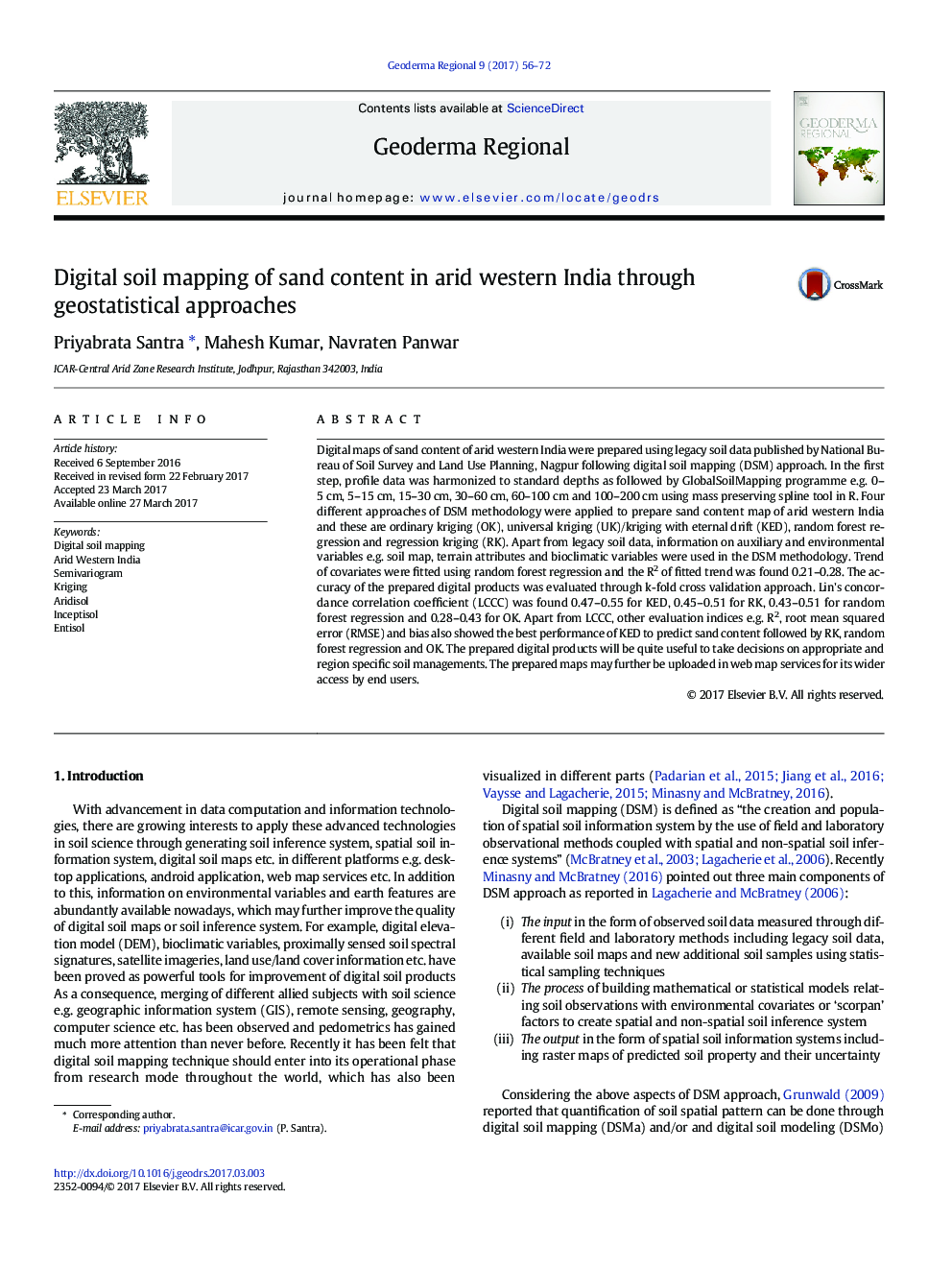| کد مقاله | کد نشریه | سال انتشار | مقاله انگلیسی | نسخه تمام متن |
|---|---|---|---|---|
| 5758674 | 1623007 | 2017 | 17 صفحه PDF | دانلود رایگان |
- Legacy soil data in arid western India was used to prepare sand content map through DSM approaches.
- Soil profiles of legacy soil data was harmonized through mass preserving spline.
- Soil map, terrain attributes and bioclimatic variables were used as covariates in DSM methodology.
- Ordinary kriging (OK), universal kriging (UK), and regression kriging (RK) were compared.
- Digital maps of sand content were evaluated through k-fold cross validation.
Digital maps of sand content of arid western India were prepared using legacy soil data published by National Bureau of Soil Survey and Land Use Planning, Nagpur following digital soil mapping (DSM) approach. In the first step, profile data was harmonized to standard depths as followed by GlobalSoilMapping programme e.g. 0-5Â cm, 5-15Â cm, 15-30Â cm, 30-60Â cm, 60-100Â cm and 100-200Â cm using mass preserving spline tool in R. Four different approaches of DSM methodology were applied to prepare sand content map of arid western India and these are ordinary kriging (OK), universal kriging (UK)/kriging with eternal drift (KED), random forest regression and regression kriging (RK). Apart from legacy soil data, information on auxiliary and environmental variables e.g. soil map, terrain attributes and bioclimatic variables were used in the DSM methodology. Trend of covariates were fitted using random forest regression and the R2 of fitted trend was found 0.21-0.28. The accuracy of the prepared digital products was evaluated through k-fold cross validation approach. Lin's concordance correlation coefficient (LCCC) was found 0.47-0.55 for KED, 0.45-0.51 for RK, 0.43-0.51 for random forest regression and 0.28-0.43 for OK. Apart from LCCC, other evaluation indices e.g. R2, root mean squared error (RMSE) and bias also showed the best performance of KED to predict sand content followed by RK, random forest regression and OK. The prepared digital products will be quite useful to take decisions on appropriate and region specific soil managements. The prepared maps may further be uploaded in web map services for its wider access by end users.
Journal: Geoderma Regional - Volume 9, June 2017, Pages 56-72
